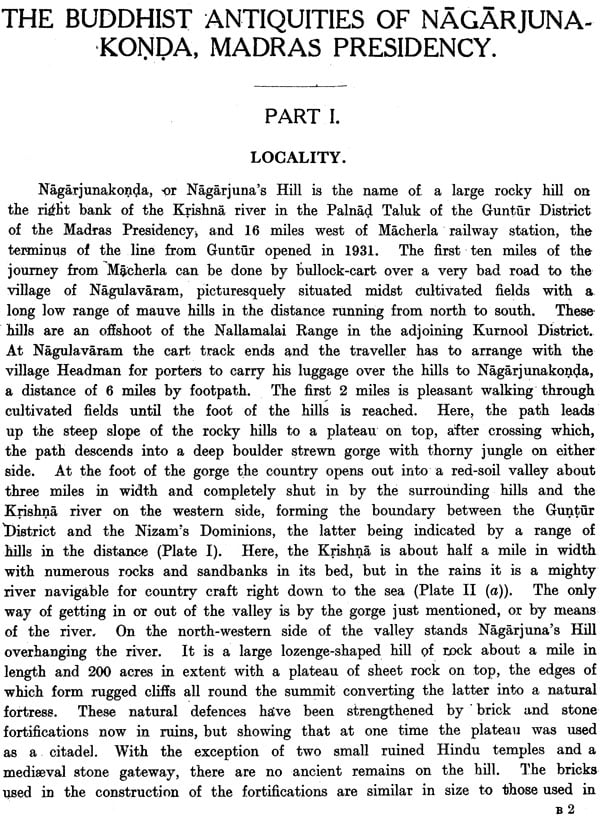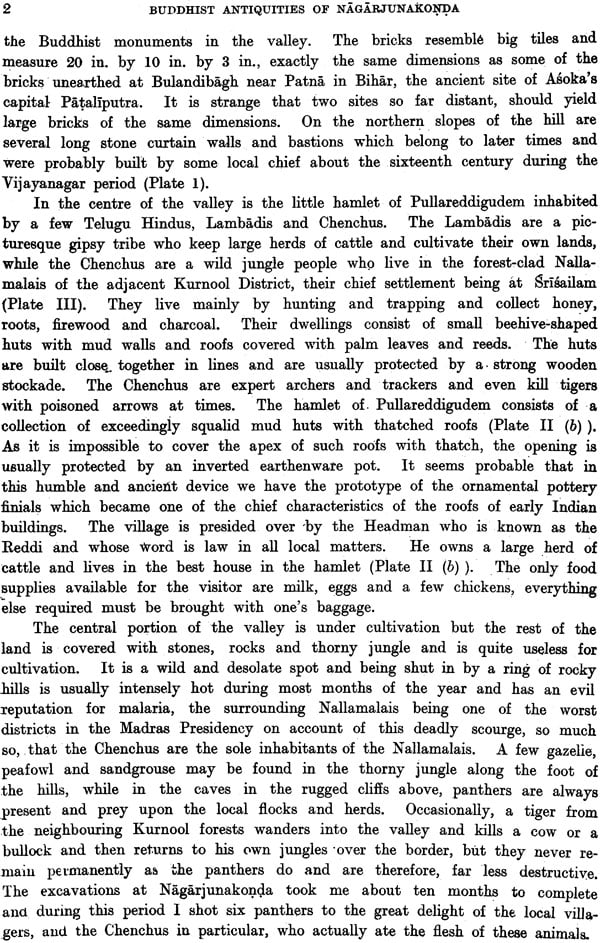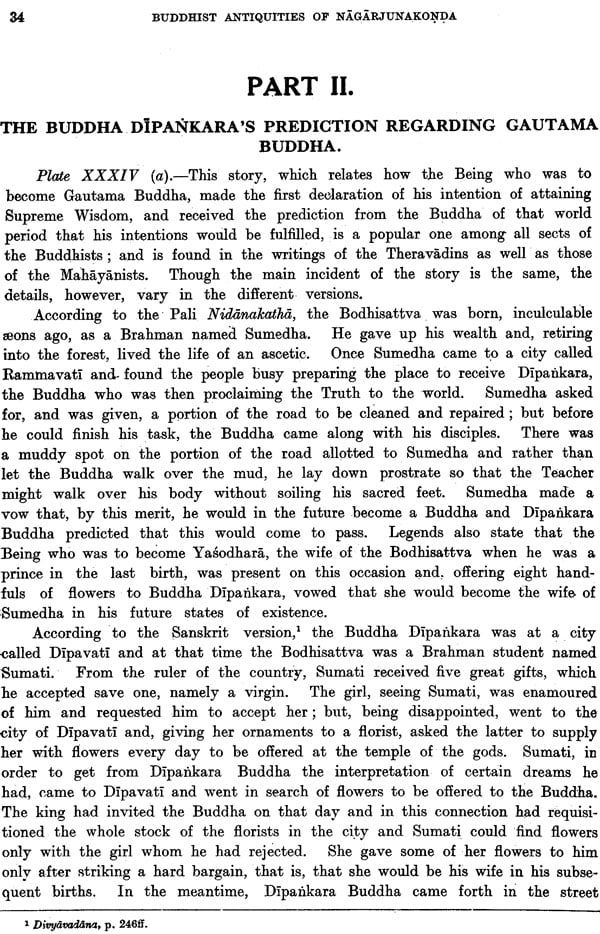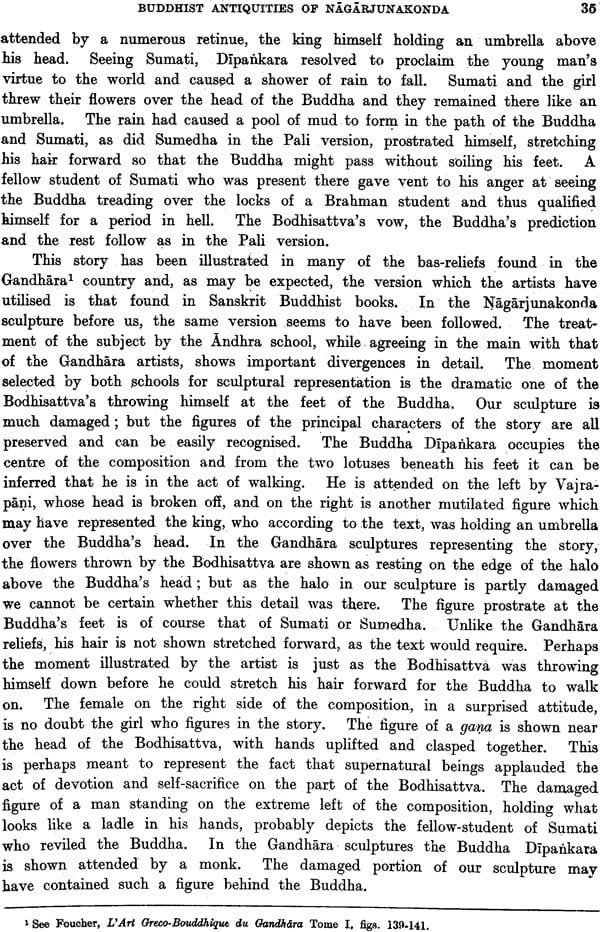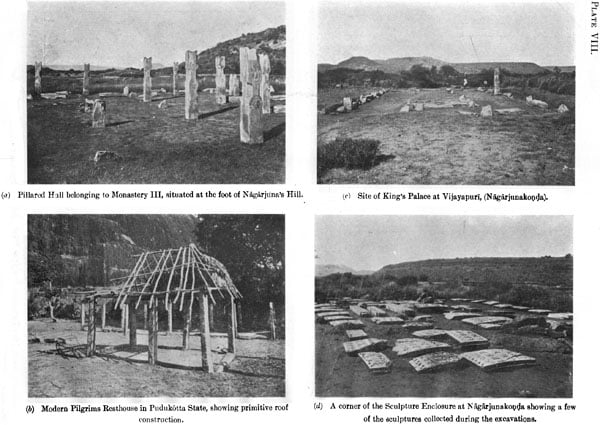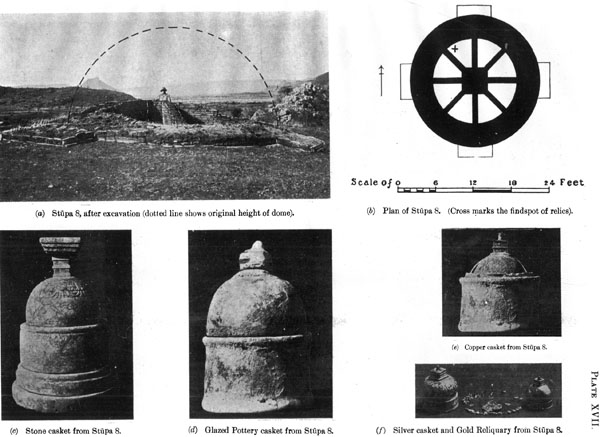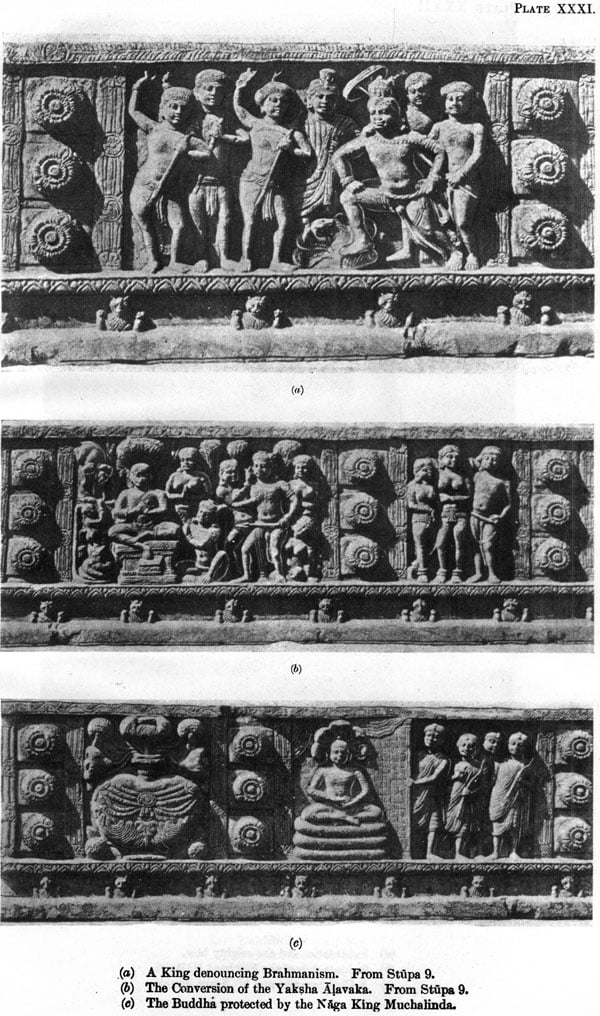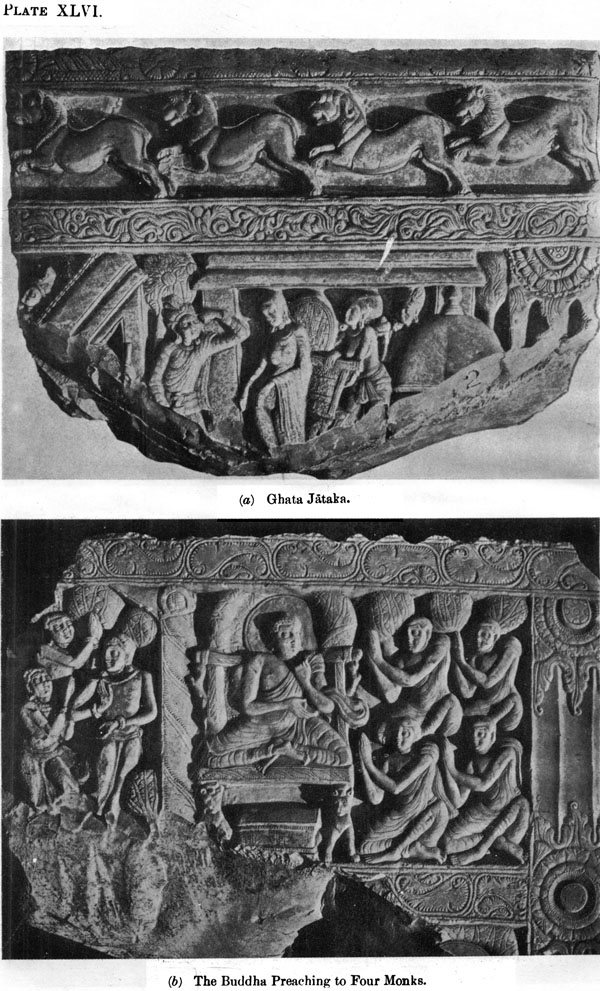
The Buddhist Antiquities of Nagarjunakonda, Madras Presidency
Book Specification
| Item Code: | NAL162 |
| Author: | A.H. Longhurst |
| Publisher: | ARCHAEOLOGICAL SURVEY OF INDIA |
| Language: | English |
| Edition: | 1999 |
| Pages: | 132, (141 B/W Illustrations) |
| Cover: | Hardcover |
| Other Details | 11.0 inch x 8.5 inch |
| Weight | 610 gm |
Book Description
Most of the scenes portrayed in the beautiful bas-reliefs recovered from the ruined stupas at Nagarjunakonda illustrate well-known stories from the Jataka, or incidents in the life of the Buddha and their identification is an easy matter. There are, however, a number of uncommon scenes which are difficult to identify, some of which have not been met with before in Buddhist art. This difficulty is further enhanced owing to the careless arrangement of the sculptures. For instance, a series of carved panels may illustrate a complete story from beginning to end, or on the contrary, each panel may depict a scene taken from different stories in no way related to each other. It seems that the sculptors were given a free hand in the ornamentation of the buildings at Nagarjunakonda, each man choosing his own subject as his fancy and ability dictated, just as Indian sculptors do to-day when they are employed in decorating a modern temple.
In Part I, I have described the locality, the history of the place so far as it is known, and the chief buildings and antiquities discovered during the explorations. I have to thank Dr. J. Ph. Vogel of Leiden University, for permission to use his valuable paper on the Nagarjunakaonda Inscriptions published in the Epigraphia Indica, Vol. XX, 1931, in giving a brief history of the site here.
I am greatly indebted to Dr. S. Paranavitana, Epigraphical Assistant to the Archaeological Commissioner, Ceylon, for the scholarly description of the interesting bas-reliefs illustrated in Part II. The identification of the different scenes portrayed in these sculptures entailed a considerable amount of careful research work which Dr. Paranvitana very kindly undertook in addition to his official duties. In the spelling of proper names occurring in the stories, the method adopted has been to use the Pali form when the source is a Pali text and the Sanskrit form when the story is taken from Sanskrit sources. Familiar names like Siddhartha, Rajagrha, etc., are given in their Sanskrit forms, which are better known, even when the story is taken from a Pali text.
In conclusion, I would like to add that this account of the Nagarjunakonda explorations would never have been published except for the keen interest taken in the discoveries by Mr. J.F. Blakiston, late Director General of Archaeology in India, from whom I have received every encouragement and assistance in the work.
| Part I | |
| Locality | 1 |
| History | 3 |
| Temples | 8 |
| Monasteries | 9 |
| Stupas | 12 |
| Carved slabs | 24 |
| Ayaka- Cornice stones | 30 |
| Part II | |
| The Buddha Dipankara's Prediction regarding Gautama Buddha | 34 |
| The admission of the six Sakya princes and the Barber Upali to the Order | 36 |
| The Conversion of Nanda | 36 |
| The gift of Earth | 37 |
| Prince Siddhartha in the pleasure garden | 39 |
| The novice Sumana and the Naga | 39 |
| The Devas congratulating the Buddha after the Enlightenment | 41 |
| Lady Amara and the four wise men (Ummagga Jataka) | 41 |
| Champeyya Jataka | 43 |
| Mandhatu Jataka | 44 |
| The Naga King Apalala subdued by the Buddha | 45 |
| Sibi Jataka | 46 |
| Transport of Relics | 47 |
| Mandhatu Jataka | 47 |
| The Buddha visited by Indra in the cave if Indrasaila | 48 |
| Dasaratha Jataka | 49 |
| Mahapaduma Jataka | 51 |
| Upasagara and Devagabbha (Ghata Jataka) | 53 |
| The Buddha preaching to four monks | 54 |
| Dighitikosala Jataka | 55 |
| The first offering of food to the Buddha after the enlightenment and the Buddha's meeting with the friar Upaka | 56 |
| Sagata and the Naga of the Mango-ferry | 57 |
| The conversion of the Yaksha Alavaka | 58 |
| King Kappina the Great's Conversion | 60 |
| Episodes in the career of the Buddha | 61 |
| Index | 63 |
